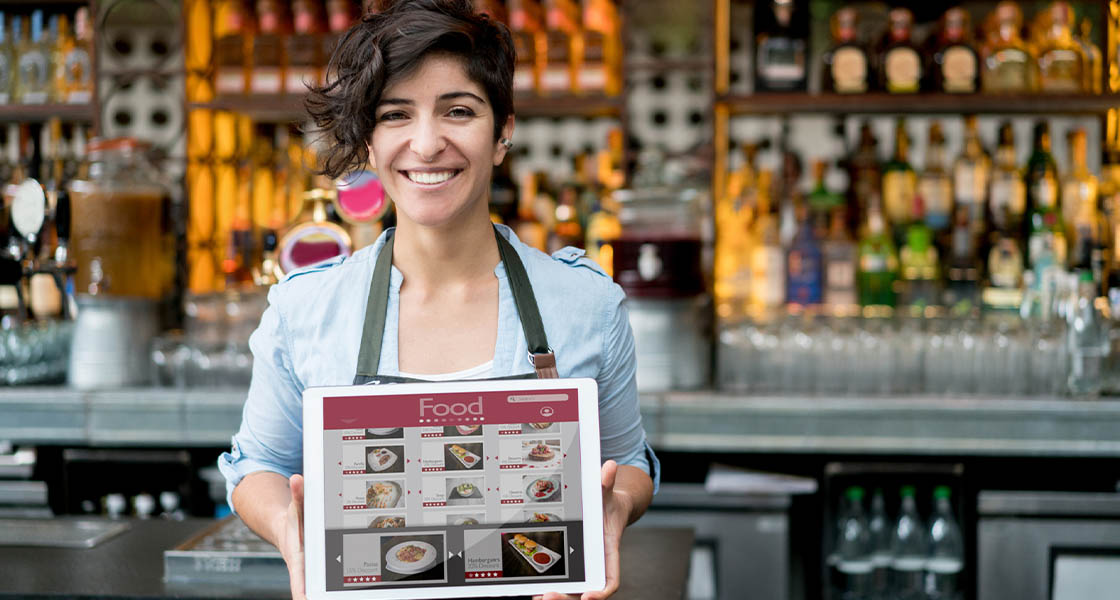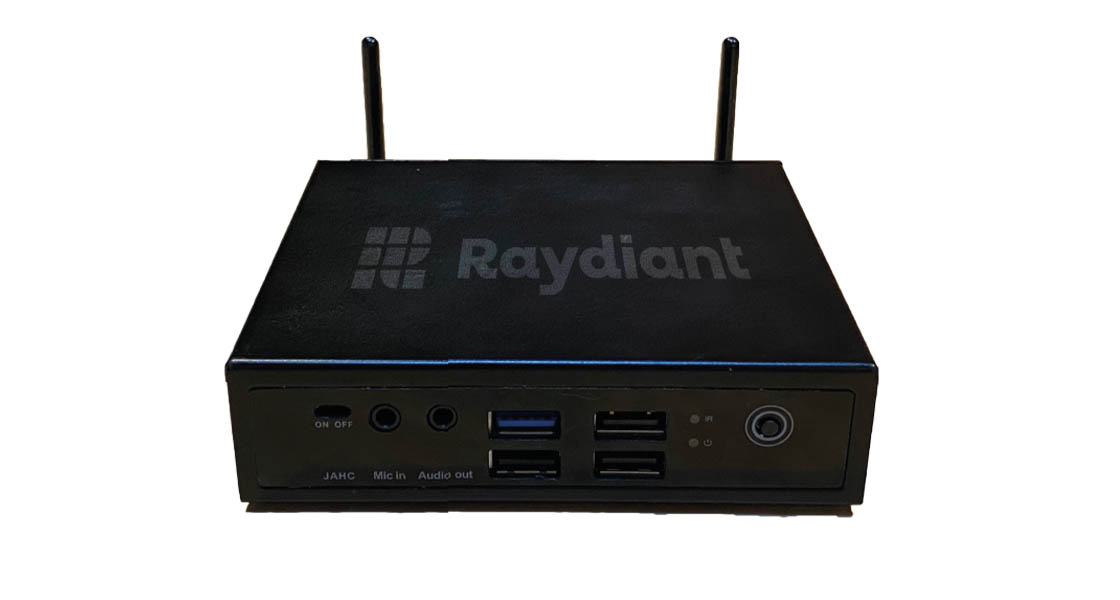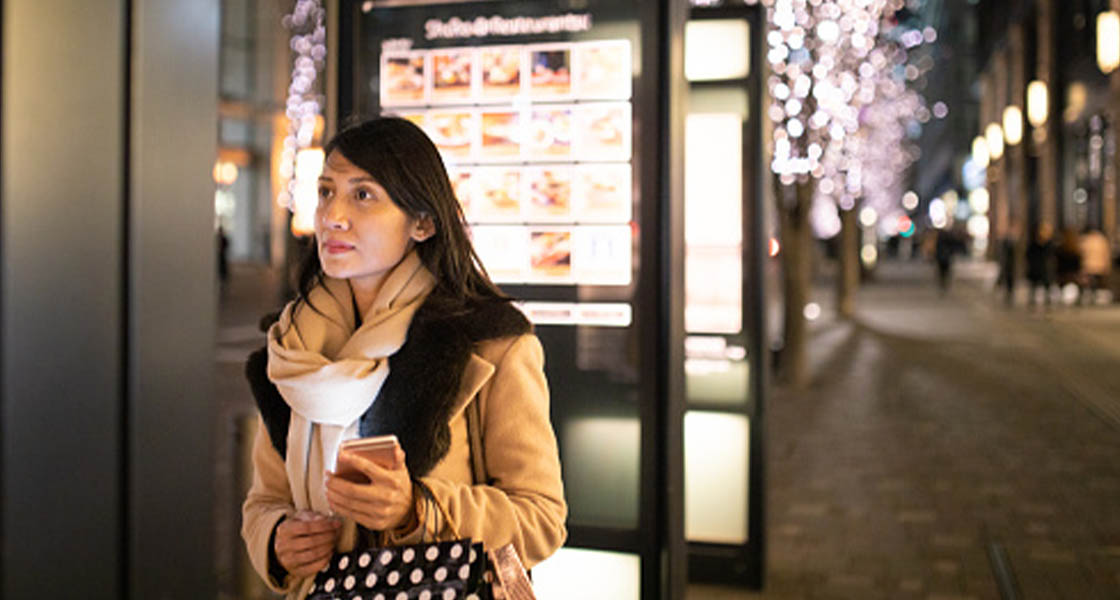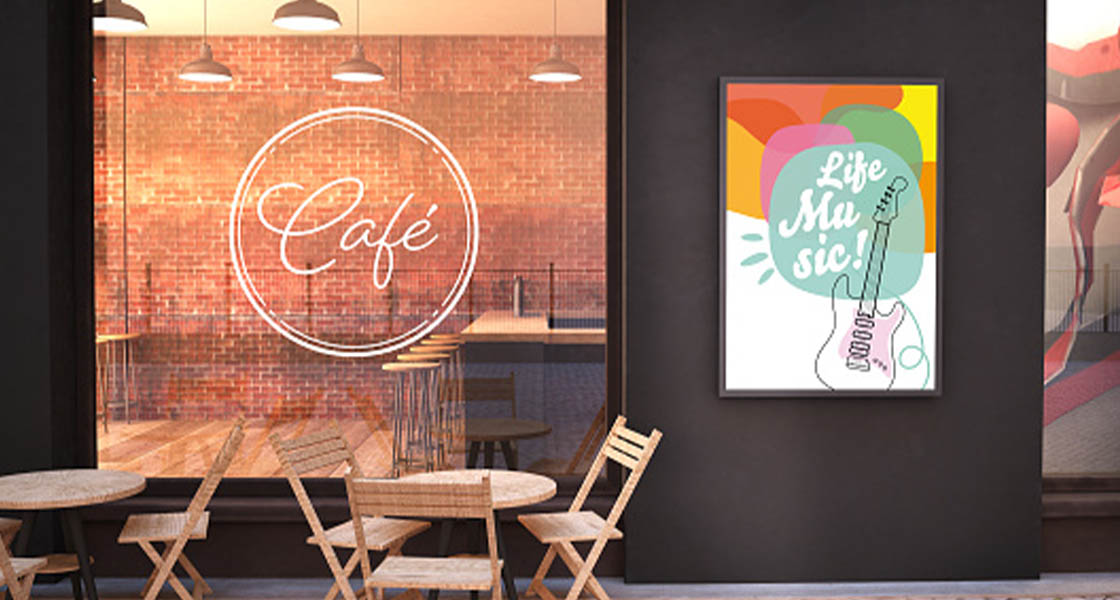© 2024 ALL RIGHTS RESERVED
Raydiant
www.raydiant.com
Raydiant is in the business of creating unique in-store experiences for brick-and-mortar outlets with a cloud-based, dynamic display platform.
As part of its platform, Raydiant wanted to give customers the ability to display real-time information to customers inside and outside their locations using cellular, Ethernet or Wi-Fi communications.
MC Series Module
Raydiant is in the business of creating unique in-store experiences for brick-and-mortar outlets with a cloud-based, dynamic display platform. Using its products, Raydiant’s clients can communicate to their employees and customers in a scalable, secure and consistent way. The company’s rich application platform offers an ever-growing marketplace of applications which includes but isn’t limited to videoconferencing (BlueJeans & Zoom), drag-and-drop content editing (PosterMyWall), unified digital menu management (SinglePlatform),fully-licensed B2B music (Soundtrack Your Brand) and team leadership boards (Hoopla).
The wealth of Sierra documentation and their mature Software Development Kit (SDK) helped us accelerate development, and PWS helped us work through support issues. The module has extensive carrier approvals and multiple carrier images, so it allows for widespread use of the device.
Bobby Marhamat
CEO, Raydiant
Research shows that 71% of consumers spend $50 or more when shopping in-store compared to just 54% spending $50 or more when shopping online.1 Consumers are much more likely to make impulse purchases in-store versus online. Brick-and-mortar locations can capture more of these impulse purchases by driving more foot traffic through the doors, but also by enriching the on-site experience and offering in-store only promotions. Being able to grab the customer’s attention once they are on site and provide the most up-to-date and relevant information, whether its promotions, directions or safety information, and accomplishing it in a way that’s consistent with a brand, is critical.
With COVID-19, these communications are even more important. Restaurants have restrictions including providing non-reusable menus, social distancing for dine-ins, and hygiene and cleanliness for employees. Retailers need to be able to control access and guide patrons through outlets in an organized and safe manner. Retailers need to be able to communicate to customers while they are inside their locations but also “through the window” to those outside (e.g. curbside pick-up).
Traditionally, the in-store experience has been created using printed signs and digital displays. The printed signage market2 was valued at $45.8B USD in 2019 and is expected to grow at a CAGR of 0.31% by 2025. The global digital signage market size is expected to grow at a CAGR of 8% to $31.7B USD by 2025.3 Until now, both strategies have had limitations. With printed signage, once the sign is printed, it’s difficult to change the message and there is an environmental impact of single-use signs. For digital signage, price has been a serious obstacle.
Given the direct correlation between customer experience on location and return visits, Raydiant has built a complete location experience platform which includes digital signage. The company’s solution is unique in that it allows customers to use any HDMI-compatible screen and transform it into signage. With the simple addition of ScreenRay, retailers can transform screens into dynamic communications platforms. The ScreenRay can be installed and set-up in under 5 minutes, and through a cloud platform, customers have a complete view of all screens in all locations and can customize and schedule content on demand. Raydiant offers a rich application suite to enable retailers to customize messaging, with over 200,000 content templates. The platform enables the addition of music, video conferencing and the integration of third-party sources like Instagram and YouTube. Templates also enable multiple zones so displays can be simultaneously populated with video, news and weather.
The ScreenRay was launched in 2018 and supports Wi-Fi and Ethernet. Raydiant then identified several customers that didn’t want to or were unable to use Wi-Fi for this application and subsequently set out to develop a product that would use LTE networks for connectivity.
We have several large customers with hundreds of locations, and many of their locations don’t support reliable Wi-Fi, so with this product we can satisfy their requirements, This product also enables customers like banks, who don’t want to open up their Wi-Fi networks, to provide a better on-location experience. By giving our customers the option to use Wi-Fi, Ethernet and cellular, it will make it much easier for them to scale – at each location and across locations.
Bobby Marhamat
CEO, Raydiant
Working with Premier Wireless Solutions (PWS), Raydiant determined that by selecting Sierra Wireless, it could offer an LTE version of its product and significantly reduce overall development time and time-to market. Raydiant has embedded the MC7455 into its new product, the ScreenRay LTE. The MC7455 module provides optimized 4G LTE Cat-6 IoT connectivity that offers customers unprecedented speed, bandwidth and network performance in a PCI express mini-card form factor making it ideal for networking equipment. The MC7455 is multi-carrier which allows customers to send data over their network of choice.
“The wealth of Sierra documentation and their mature Software Development Kit (SDK) helped us accelerate development, and PWS helped us work through support issues. The module has extensive carrier approvals and multiple carrier images, so it allows for widespread use of the device,” explained Bobby Marhamat, CEO of Raydiant.
“We have several large customers with hundreds of locations, and many of their locations don’t support reliable Wi-Fi, so with this product we can satisfy their requirements,” said Mr. Marhamat. “This product also enables customers like banks, who don’t want to open up their Wi-Fi networks, to provide a better on-location experience. By giving our customers the option to use Wi-Fi, Ethernet and cellular, it will make it much easier for them to scale – at each location and across locations.”





Wahlburgers Restaurants was an early customer for the ScreenRay LTE and uses the platform to enhance the dining experience at each of its locations – communicating information to patrons and employees and providing music in each of the restaurants. Mark Wahlburg also uses the platform to host video conferences across the various locations to communicate with his employees.
“The opportunities are really limitless,” explained Mr. Marhamat. “Retailers that have relied on single-use print signage can now provide a cost effective, customized experience to their customers without a huge investment in hardware. Raydiant gives any business the ability to create an interactive experience for customers with a small investment via a plug-and-play, drag-and-drop interface.”
The opportunities are really limitless. Retailers that have relied on single-use print signage can now provide a cost effective, customized experience to their customers without a huge investment in hardware. Raydiant gives any business the ability to create an interactive experience for customers with a small investment via a plug-and-play, drag-and-drop interface.
Bobby Marhamat
CEO, Raydiant
Raydiant
NAM
EMEA
APAC
Global
Digital Signage
Retail
Smart Cities
MC Series Module
© 2024 ALL RIGHTS RESERVED